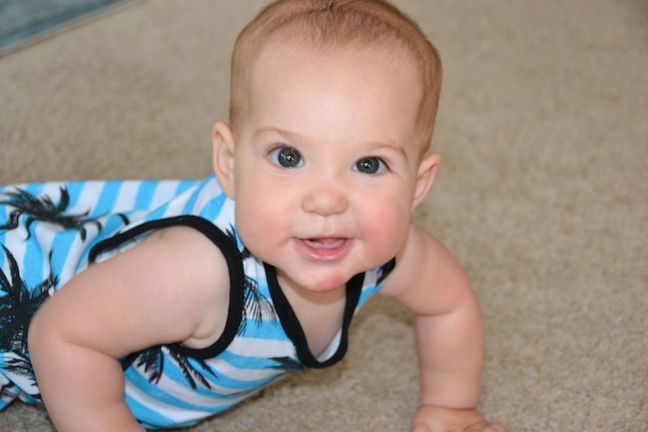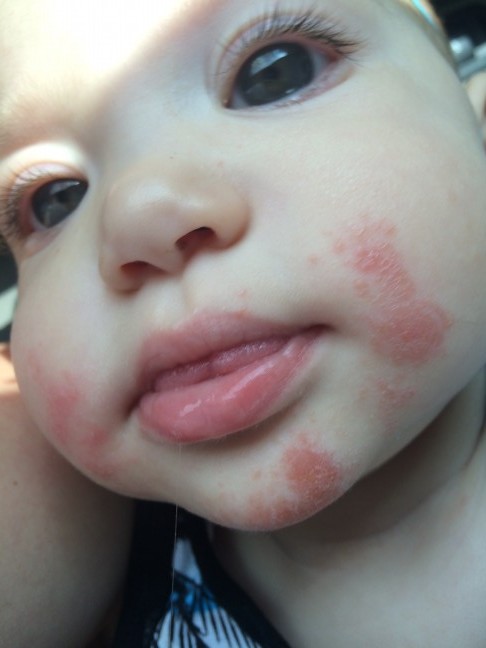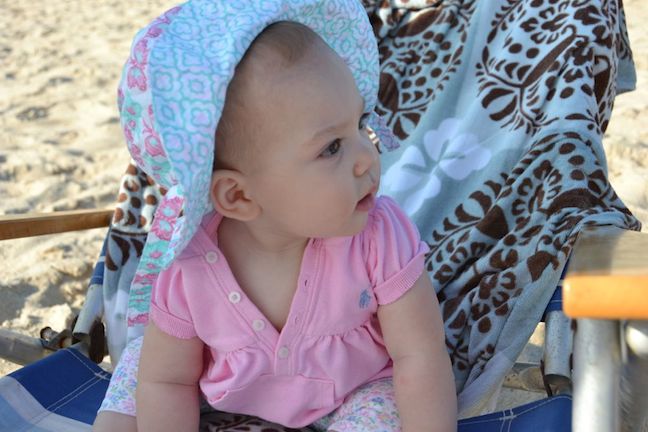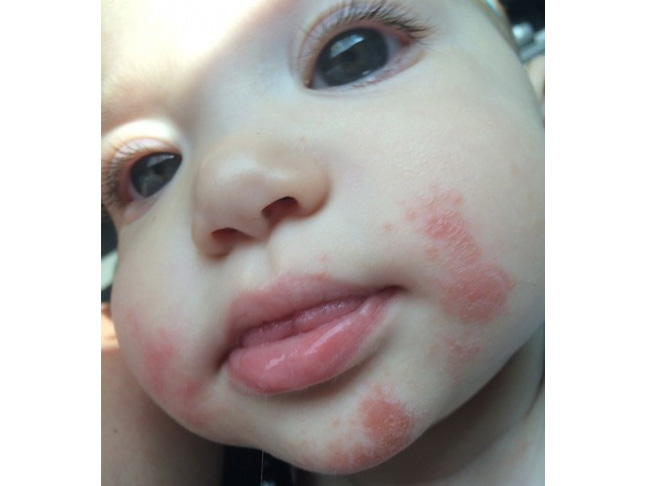
The morning of my watershed moment… one week in.
I love taking care of my daughter’s needs in any way I possibly can. Usually, that’s the “natural” way. I breastfeed her, cook most of her all-organic (solid) food from scratch, and avoid medication at all costs. Teething? I prefer natural remedies, like cold compresses and cuddles, before Tylenol. But when she developed a pretty staggering rash around her mouth and on her cheeks last month, I learned an important lesson. And I definitely won’t be forgetting it.
For a few days after trying some new foods, my daughter developed a rash around her mouth and on her chin. I assumed it was food-related and used coconut oil and breast milk every two hours to treat it. It cleared up after a couple of days. Then it was back. Other moms in line at Whole Foods (or simply walking on the street) would point out her “teething rash.” They told me it was all the extra drool she was wiping on her face as two new teeth popped through the surface. “Just put breast milk on it,” they instructed. I took their advice, but deep down I felt like something more was going on. Then again, what did I know? I’m so new at this whole parenting thing, after all.
So, breast milk worked and then didn’t work for a few more days. Meanwhile, my daughter grew increasingly bothered by the rash, was grumpy much of the time, and wasn’t eating much. I blamed the teeth, the heat, and anything else I possibly could.
Then one morning we were headed on a brief road trip north to visit my sister-in-law. My daughter, who usually naps on car rides, was fussy for the first hour. Finally, I pulled over assuming she just wanted to eat. The rash was horrible. The skin on her chin appeared to be raw and blistered. The blemishes on her cheeks were angrier than before. I snapped a pic and texted it to a few friends, all of whom assured me it was either related to teething or pacifiers (at the time, I could not get my daughter to keep a pacifier in her mouth longer than 90 seconds, so I knew that was out).

The image I sent to my doctor. I was mortified that I let it go this far…
We arrived at my sister-in-law’s house, who was then 8-months-pregnant with her first child. She is not yet fully immersed in, and thereby jaded by, this new cult of motherhood that demands we do everything “naturally.” She took one look at Willow and asked if I’d taken her to see the doctor yet. I flubbed my words. The cooler filled with breast milk and coconut oil stared at me from the corner of her living room, filled with shame. I called the pediatrician that minute.
Always one to use caution before having patients come in, our doctor suggested some OTC topical creams that I might try but also urged me to get in when I could. We made an appointment for two days later. Sure enough, my daughter’s rash was mildly infected and needed two antibacterial creams to heal. (Our pediatrician suspects an allergy to eggs was the culprit, but further testing needs to be done.) Within a few days, she was back to herself. Clear skin, no unnecessary fussiness, and her appetite returned. It could have been so much worse, though.

All cleared up!
Being a mom in this moment in time is truly a gift. Thanks to the Internet, we can share tips and learn about new developments and theories faster than in any generation before us. Simultaneously, there’s a movement taking place that leads many of us toward more natural ways of doing things. Cloth diapers are on the rise, breastfeeding is a hot topic, and even mainstream brands are rolling out organic or natural products to keep up with the demands of modern moms. Mommy-and-me yoga is popular; as are baby massage and babywearing. These are all wonderful developments!
But what happens when the “natural” way means forgetting the gift of modern medicine? When we listen to everyone around us, are advised by the trend, without focusing on our baser instinct? I learned the hard way this summer, and now that I’ve been there and back, I can say with confidence that a mother’s instincts shouldn’t be ignored. Even when that instinct is to push past the noise and seek a different solution. After all, the most natural thing I can think of is a mother doing what she knows is best for her child.
More Content About Keeping Your Baby Healthy:
- What Are the Symptoms of Cradle Cap & How Is it Treated?
- How to Treat Baby Acne (& What Causes It)
- Everything You Need to Know About Hand, Foot and Mouth Disease
Photos: Jenny Studenroth








